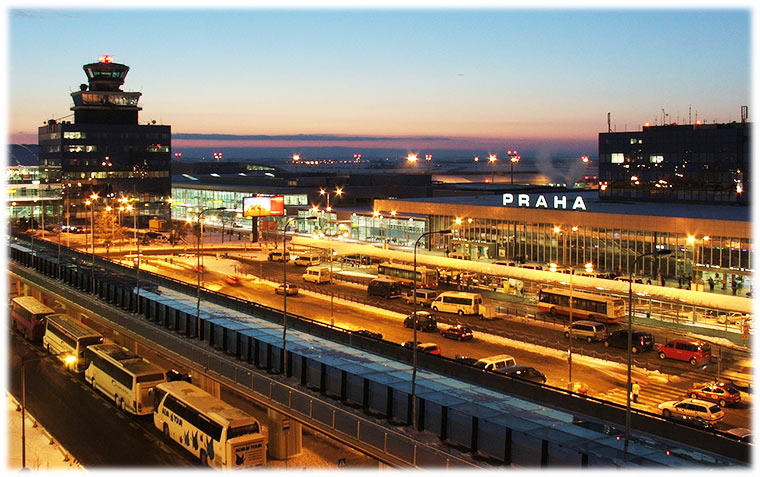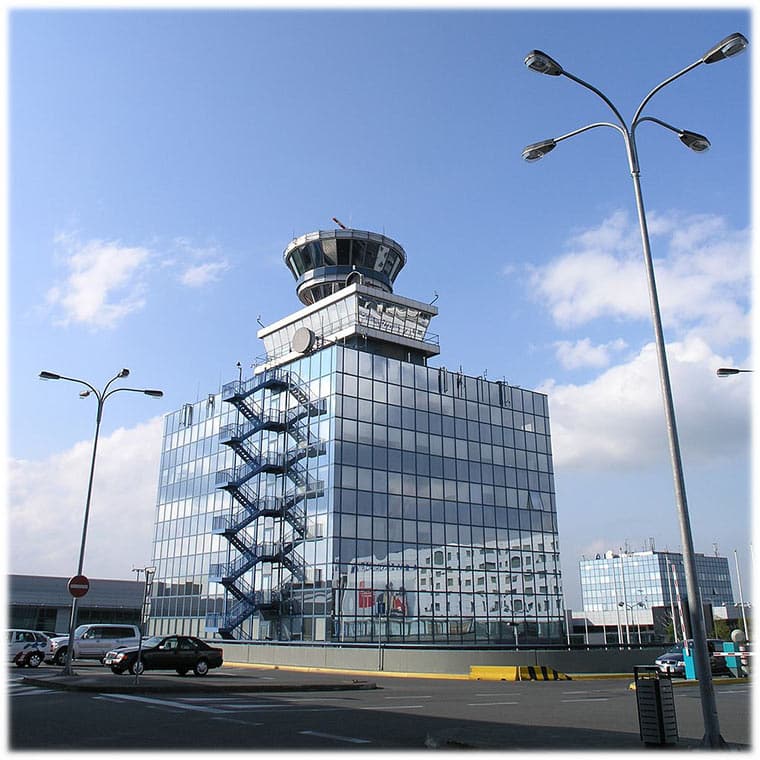
The airport features three terminals, each designed for specific types of flights with clearly defined passenger areas. In the two public terminals (T1 and T2), the arrival and departure halls are adjacent and on the same level, ensuring a smooth flow for passengers. Transfers between these terminals are available by taxi or via a short walk (approximately 5 to 10 minutes).
Terminal 1 (T1)
-
Location & Layout:
The first terminal encountered upon arrival—a long, ground-floor building located to the right. -
Flight Types:
Designed for intercontinental flights, it handles departures and arrivals for non-Schengen routes. This includes services to the United Kingdom, Ireland, North America (USA and Canada), as well as destinations in the Middle East, Africa, and Asia.
Terminal 2 (T2)
-
Location & Layout:
Situated immediately behind Terminal 1 in a smaller, single-story building at the end of the airport complex. -
Flight Types & Facilities:
Dedicated to flights within EU Schengen member countries and other European destinations, Terminal 2 comprises six interconnected buildings and offers advanced passenger amenities. Recent and ongoing modernization efforts include upgraded security checkpoints with advanced X-ray screening technology, enabling a smoother passenger experience. Plans for extensive expansion are underway to further increase capacity and accommodate both Schengen and non-Schengen flights, aiming to handle up to 21 million passengers annually in the coming years. Additionally, sustainability initiatives will position the terminal towards achieving carbon neutrality by 2030.
Terminal 3 (T3)
-
Function:
Terminal 3 is focused on non-scheduled aviation. It serves charter operations, cargo and private flights, and also caters to official state visits or significant occasions.
Additional Context: Schengen Area
Within the framework of the Schengen Agreement, border controls are largely eliminated among participating countries. The area includes:
-
EU Member States:
Austria, Belgium, Czech Republic, Denmark, Estonia, Finland, France, Germany, Greece, Hungary, Italy, Latvia, Lithuania, Luxembourg, Malta, Netherlands, Poland, Portugal, Slovakia, Slovenia, Spain, and Sweden. -
Non-EU/EFTA Members:
Iceland, Liechtenstein, Norway, and Switzerland. -
Overseas Territories Included:
Portuguese territories (Azores, Madeira), Spanish territories (Canary Islands, Ceuta, Melilla), and the German territory of Heligoland. -
Excluded Areas:
Countries like Ireland, Great Britain, Cyprus, Romania, Bulgaria, and Croatia are outside the Schengen zone. Additionally, some small states (Monaco, San Marino, Vatican City) and many overseas territories (including regions of France, Norway, Denmark, the Netherlands, and the British Crown Dependencies) remain outside the arrangement.


